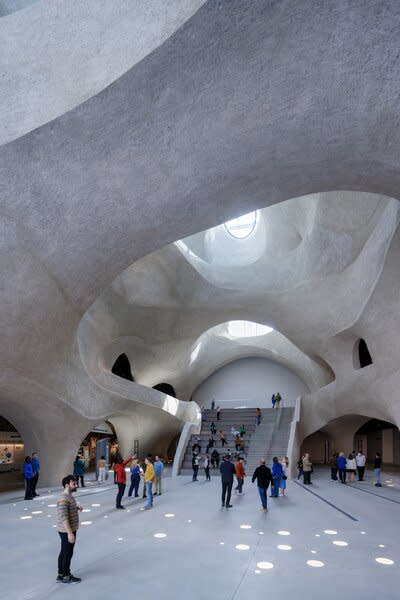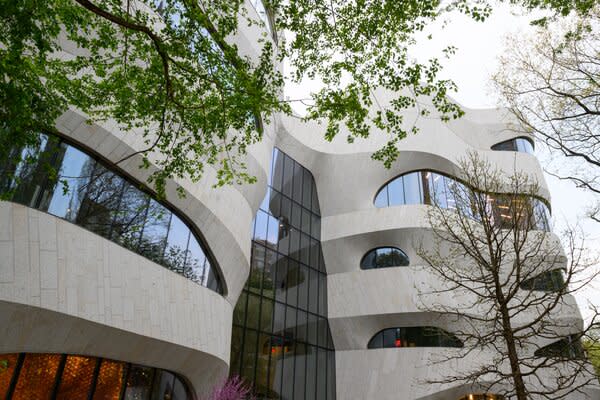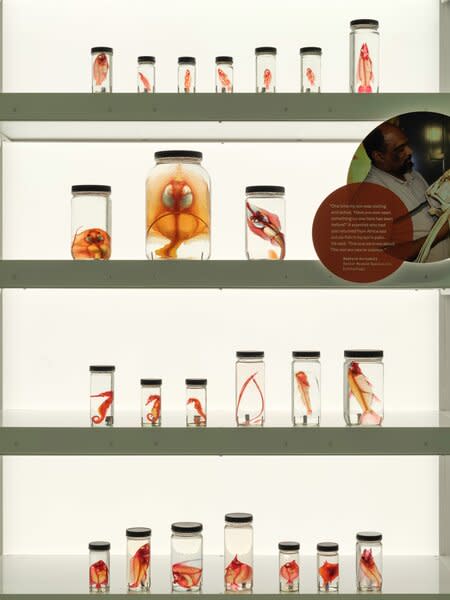A Four-Year-Old Reviews the American Museum of Natural History’s New Gilder Center
The AMNH’s $465 million addition has received its fair share of press, but how does it hold up with its primary audience?

Like any four-year-old with an interest in building Lego cities and digging in dirt, my son Douglas has been begging to visit the American Museum of Natural History (AMNH) since the last time he visited. Though he’s been many times before, he always finds something different to obsess over, like taxidermied Komodo dragons in the Hall of Reptiles or the Willamette Meteorite in the Hall of the Universe. When I told him last Sunday that we were going to check out the museum’s newly opened Gilder Center, he was thrilled. For a preschooler who’s never heard of "architecture" and can barely fathom that some of the fossils stored within the museum’s historically significant walls are hundreds of millions of years old—let alone how much a million years is—all that matters is that the building is new. He also really wanted to see some dinosaurs.
The much buzzed-about new wing is a cavernous 84-foot atrium that feels like a canyon begging to be explored; its interior walls are made of shotcrete, a technique where concrete is sprayed onto rebar, the results of which evoke the natural landscapes of the American Southwest or the man-made netherworld of the New York City subway system. (The exterior is clad in Milford pink granite.) Designed by Chicago-based architecture practice Studio Gang, the 230,000-square-foot addition to the AMNH’s existing 26 buildings is an instant landmark for the city. It represents a lot of lofty ideas about design, conservation, and the importance of science education at times like these. "The architecture taps into the desire for exploration and discovery that is so emblematic of science and also such a big part of being human," Studio Gang founding principal Jeanne Gang says on the firm’s website. "When you step into the Gilder Center, you immediately feel a sense of wonder."
After seeing the undulating edifice through the eyes of my precocious, preternaturally enthusiastic four year old, I can tell you that’s certainly true. We visited just three days after the building, originally slated for a 2019 ribbon cutting to coincide with the museum’s 150th anniversary, opened to the public after a slew of delays. Even at 10 a.m. sharp, we had to wait in line. The excitement over the $465 million addition, first announced in 2014, was palpable, and tickets to one of the new, permanent exhibits, Invisible Worlds, were sold out. Even so, there was plenty of ground for us to cover in the five-story structure, including the butterfly vivarium, a tropical rainforest–like butterfly habitat that overlooks 79th Street; the collections core, a selection of around 3,000 specimens usually stored behind the scenes including various bats, turtle shells, and lantern slides, which I described to Douglas as "instant pictures from before people had cameras or phones"; and the insectarium, the first stop on our visit, its name alone music to the ears of a little boy whose pre-K class recently completed a unit on bugs.
See the full story on Dwell.com: A Four-Year-Old Reviews the American Museum of Natural History’s New Gilder Center
Related stories:




